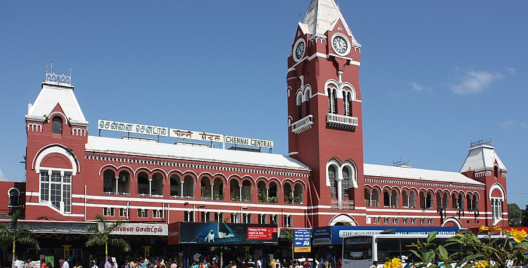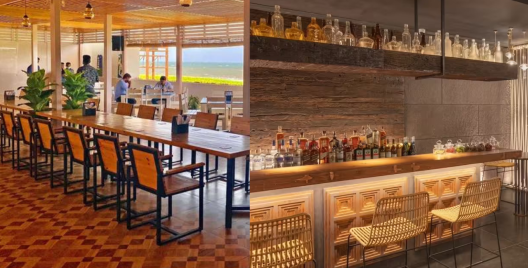With the blistering heat already setting in, the natural course is to run for the hills, literally. Head for a weeklong Himalayan holiday in the mountains of North Bengal this summer and watch the scorching Sun melt away.
From time immemorial, the Himalayas have exercised a powerful magnetic attraction. Travelers, revelers, traders, invaders, all have tried to transcend its immense height and inaccessible terrains. The purpose of each group may have been different but their goal was the same: getting up, close and personal with the world’s tallest mountain range.

Where: North Bengal is a term used to refer to the picturesque northern parts of Bangladesh and the state of West Bengal in India. The West Bengal part consists of many pretty towns, the prettiest of which are mentioned here: Kurseong, Darjeeling, Kalimpong and the smaller, relatively unknown hill stations of Lava, Lolegaon and Rishop.
How to get there: Siliguri is the main town in terms of connectivity to the rest of the places. It is connected to the Bagdogra airport (31 km) and to Darjeeling, Kalimpong and Kurseong by the Darjeeling Himalayan Railway. Hired cabs also ply between the towns. There are flight options from Bangalore, Hyderabad and Chennai to Bagdogra but the flight duration tends to be long. It is best to fly to Kolkata, halt for sometime and continue on to Bagdogra.
Accommodation: Each of the major towns has its share of economy and luxury hotels. It is best to book in advance online before starting off. As for food, you can eat at the hotels you are staying in or sample the local cuisine at the many eateries lining the main town squares.
Best Time to Visit: March to May or Oct and Nov. December to February may be extremely cold with snowfall, whereas June to September, the monsoon months, are wet, cloudy and foggy. Though the area is perfectly peaceful it is better to enquire about the current political situation before setting off.
Weather: The March quarter as well as October and November are dry and pleasantly cold with clear skies. Since most of the tourist attractions are situated at high altitudes, it is prudent to carry a set of warm clothes no matter which time of the year you decide to visit.
The Towns

Kurseong: 47 km from Siliguri. Height above MSL: 1450 m
The best way to reach Kurseong is the Darjeeling Himalayan Railway, the famous ‘Toy Train’, now declared a World Heritage Site. Whether you relive your childhood as the train chugs along or recall the iconic way in which Rajesh Khanna serenaded Sharmila Tagore with the love anthem ‘Mere Sapnon Ki Rani’, there is no denying that you will experience a slice of heaven on the journey. Just make sure you have ample energy as a walk from the Toy Train station to your hotel may leave you well and truly out of breath.
Though not as popular as Darjeeling, Kurseong boasts of many tourist attractions the main among them being its lush tea gardens. These tea gardens also offer B&B options so you can relax amidst the very essence of the town. A number of temples and monasteries span the length of the town lending a spiritual aura to the place. The DowHill Park, the natural falls and the museums are the other attractions. Of course, the one must-do here is to take a walk or a ride through the forest of Cryptomaria Japonica on the road (Aranya Sarani) which will lead you to the sprawling meadows of Chimney, so called because a long, dilapidated chimney, standing all alone, is the only remnant of a majestic bungalow which stood here.
Darjeeling: 30 km from Kurseong. Height above MSL: 2050 m
Once you are done exploring Kurseong, hop back on to the Toy Train to reach Darjeeling, just 30 km away. Leaving behind decades of unrest Darjeeling gets ready to regain its position as the original Queen of Hills as peace returns to this quaint hill station. The main attraction of Darjeeling is the expansive view of the world’s third highest mountain, the Kanchendzonga (Kanchenjunga) as viewed from the famous Tiger Hills, 13 km from the main town of Darjeeling. Even Mount Everest, the world’s tallest peak, is visible from here, more so on clear days. The Mall, Darjeeling’s legendary commercial street, is a confluence of the cultures of the various Himalayan kingdoms, especially of Tibet. The vibrant and unique merchandise on display in the souvenir shops lining the Mall road will tempt you to indulge in some serious retail therapy. The colourful, hand-knitted sweaters, antique curios, black and white portraits, wind chimes and myriad other handicrafts on display are worth every penny. The Mall Road leads to the Chowrasta, which is a hive of activity with more shops selling tribal ornaments, eateries, pony rides and general bonhomie livening up the atmosphere. Darjeeling also houses several Buddhist monasteries and temples which lend a spiritual glow to the hilly haven. For plant lovers, a visit to the Botanical Gardens will acquaint them with rare and exotic Himalayan flora. Animal lovers can visit the Darjeeling Zoological Gardens for a look at the rare Red Panda, the Siberian Tiger, snow leopards, snow yaks and great grey birds.

Kalimpong: 21 Km from Darjeeling; Height above MSL: 1250 m
You can always take the train to Kalimpong but an even better way to reach the hill station is via road. The journey through the tea gardens with the emerald coloured Teesta River meandering along is a mesmerising one. Kalimpong, located on a ridge overlooking the Teesta, is famous for its horticulture. The wide array of orchids and other Himalayan flowers on display impart a rainbow of hues to the area. The Nepali influence on its culture is predominant here as seen in the eatables and merchandise on sale here. The recently established Science Centre on the Deolo Hill is a major tourist attraction. The Buddhist monastery, Zang Dhok Palri Phodang, holds a number of rare Tibetan Buddhist scriptures.
Lava: 30 km from Kalimpong Height above MSL: 2190 m
This is a recent addition to the tourist map and can be reached via road from Kalimpong. Lava has had a tumultuous history being ruled first by the Lepchas, and then the king of Bhutan, then the British till finally it became an integral part of independent India. Now the virginal paradise beckons nature lovers to come and imbue its serene loveliness.
Lava in Bhutanese means Land of the God and once you feast your eyes on the breathtaking beauty on offer, you will experience the divinity in all its natural splendour. During your ascent to Lava, you will notice how the conifers dotting the mountain lend their alpine glory to the place making the surroundings picture postcard perfect. Lava being a high point is perennially cold, even in peak summer, so be sure to arm yourself with sweaters, mufflers, jackets, the works. The main town square of Lava with narrow lanes filled with overcrowded hotels and shops does mar the scenic beauty of the place but the unparalleled views of Kanchenjunga and the plains of Mal Bazaar from the various vantage points more than make up for the blotch. Enjoy Lava’s beauty at the West Bengal Forest Development Corporation’s Nature and Wilderness Resort Complex. Do include a visit to the Lava Monastery as part of your itinerary. Perched on the hillside, this Buddhist Monastery exudes peace and charm.

Rishop: near Lava; Height above MSL: 2590 m
Rishop (Ri – mountain peak, Shop – ancient trees in Tibetan) is a scenic point higher than Lava and ideal for trekking to. (Those averse to trekking can take a bumpy car ride from Lava which will take thirty minutes). Part of the trek passes through the above mentioned Forest Resort filled abundantly with myriad flowers and orchids and makes the journey even more pleasant. There are not many hotels or resorts at Rishop so it is advisable to set base at Lava and travel to Rishop and back on the same day. The mountain forests are lush in the area and the birds’ eye view points help you take in the vast area in one sweep.
Lolegaon: 23 km from Lava; Height above MSL: 1500 m
En route to Lolegaon from Lava lie the Chhangey Falls. This is slightly dangerous terrain. You have to park your car at a specific spot and cover the rest of the distance on foot. Crossing a precariously poised handmade bridge is the first challenge; then you need to navigate a narrow, hilly path to reach the falls sprouting out of a steep rock face. The journey back to the car is equally tense as you have to gingerly make your way back the same narrow path without much room to manoeuvre. But the sight of the falls tumbling down like a spray of foam, the clear cut rocks and the sound of the brook gurgling by is worth the assorted troubles you take to reach the spot. After a hearty view of one of Nature’s wonders you can proceed to Lolegaon with refreshed energy. The bedazzling beauty of this largely untouched landscape lies in its magnificent views, fascinating sunrises and the charming solitude. The snow-capped Kanchenjunga forms a formidable yet breathtaking backdrop and its view from the Jhandi Dhara View Point is awe inspiring, to say the least. A visit to the Ecology Park is also warranted to enjoy the vibrant masterpiece that is nature. The beautifully maintained gardens and lawns are ideal for spending a day in intimate conversation with nature. The Canopy Walk is a trek through the forests full of fir, oak and birch trees. The land, broken by mountains and streams, is joined by inter-connected hanging foot bridges. These flimsy looking bridges sway from side to side so you have to exercise caution. Yet another thing that you need to be wary of in Lolegaon (and in Lava) is the leeches inhabiting its forested terrain. Be sure to carry a packet of salt with you when you venture into the forest. Salt is a well known natural weapon to ward of leech attacks.















